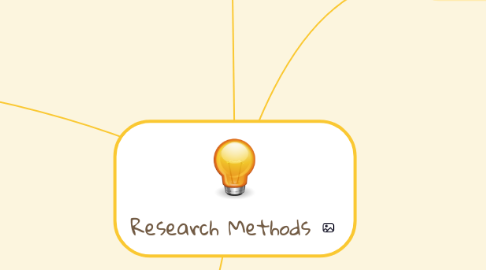
1. Quantitative
1.1. Pros
1.1.1. Explains, predictS, and/or controlS phenomena through focused collection of numerical data
1.1.2. Objective and focused approach to inquiry
1.1.3. Sampling tends to be large and random in order to be generalizable
1.1.4. Standardized approach
1.1.5. Structured and specified in detail in advance to study
1.1.6. Raw data is numbers which can produce significantly supporting statistics
1.2. Cons
1.2.1. Reductionist approach- reduces people to numbers and statistics which contradicts holistic approach of occupational therapy
1.2.2. Inflexible and no option to explore participants perspectives deeper
1.3. Data collection methods
1.3.1. Questionnaires
1.3.2. Surveys
2. Data Analysis
2.1. Thematic Analysis
2.1.1. Pros
2.1.1.1. Categorises data into meaningful Themes
2.1.1.2. More exploratory than content analysis; understanding data instead of 'knowing' it
2.1.1.3. Close to data and making links between emerging themes
2.1.1.4. Main aim is to produce key themes with describe the essence of the study
2.1.1.5. Emerging results can be tested using quantitative methods where appropriate and beneficial.
2.1.2. Cons
2.1.2.1. Time consuming
2.1.2.2. Data supportive
2.1.2.3. Unintentionally fabricating evidence is a common issue due to researcher 'seeing' what they expect to find
2.2. Content Analysis
2.2.1. Pros
2.2.1.1. Basic type of data analysis which involves counting how many times an instance occurs
2.2.1.2. Can check reliability
2.2.1.3. Easy follow up
2.2.1.4. Can be used in qualitative and quantitative research
2.2.1.5. unobtrusive means of analysing data
2.2.2. Cons
2.2.2.1. Can be 'uninteresting'
2.2.2.2. Arguably more relevant to quantitative approach
2.2.2.3. Often devoid of theoretical base, or attempts too liberally to draw meaningful inferences about the relationships
2.2.2.4. can be reductive when dealing with complex texts
3. Sampling
3.1. Purposive
3.1.1. consists of preferred participants who are most likely to give the required insights for the study
3.1.1.1. appropriate sampling helps to ensure validity of study
3.1.2. Will produce a small number of participants (8-10)
3.2. Snowball sampling
3.2.1. Will produce too large of a sample size
3.2.2. Would be unmanageable for the timescale
4. Qualitative
4.1. Pros
4.1.1. Produces rich data to gain insight into phenomena
4.1.2. subjective and holistic approach to inquiry
4.1.3. Sampling tends to be small and purposive
4.1.4. Flexible and specified only in general terms therefore gives freedom to explore participants perspectives further
4.1.5. Raw data is words- researcher closely analyses and codes data therefore they are close to data which can be invaluable for data analysis
4.2. Cons
4.2.1. Small sample sizes are difficult to generalise
4.2.2. Non-standardised approach
4.2.3. In data analysis researcher can become "too close" to data which may result in bias
4.2.3.1. Control: involvement of a second or more researchers
4.3. Data collection methods
4.3.1. Interviews
4.3.1.1. Standardized
4.3.1.1.1. Formal, structured interviews-less opportunity to explore participants perceptions deeper
4.3.1.2. Non-standardized/ semi-structured
4.3.1.2.1. Pros
4.3.1.2.2. Cons
4.3.1.2.3. Interview style
4.3.2. Focus groups
